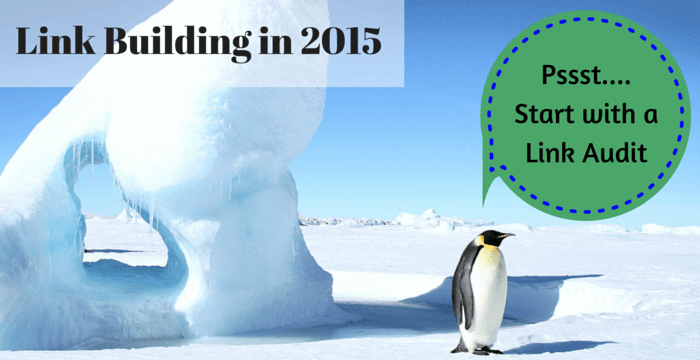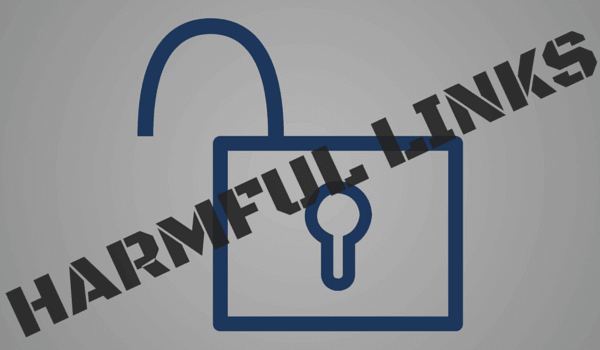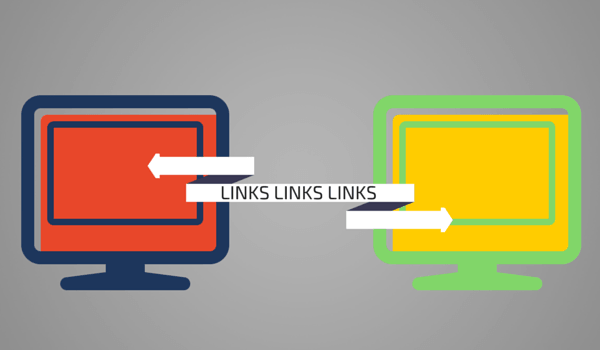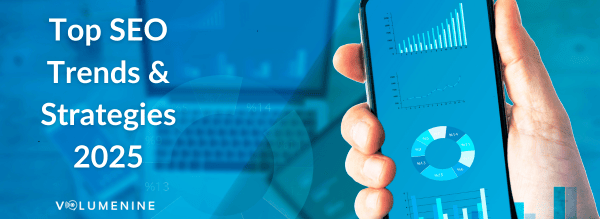
Why You Need a Link Removal Audit!
Now that we have looked at the history of link building and how we got where we are now, the next logical questions is, “What’s next?” Putting the history behind us, you hear the same advice pretty frequently in the industry, you need to have a “good” backlink profile with high quality links, and you should avoid “bad” backlinks that can harm your website in the longterm. But what does that really mean? Better yet, how do you even go about auditing your backlink profile?
If we’re all being honest, there’s no doubt links still play a significant role in search engine algorithms, and can even be the difference between ranking on the first page of search results, and not ranking at all. Taking time in 2015 to audit your current backlink profile for opportunities, and dare I say links that should be removed entirely, will be extremely important to ensure on-going success.
In this post, we’ll look at the best ways to approach your website’s link profile, as well as tools and tips for maintaining a profile that benefits your website visibility long-term. The idea of identifying potentially harmful backlinks, link removals, and risk mitigation can seem like very big concepts, and can even be intimidating. We’ll take a closer look at how to effectively audit the links to your site and more importantly, the process for identifying and removing risky links before Google identifies them for you.
Why You Need a Link Removal Audit
Most likely, we’ve all been guilty of assuming everything was going well and ignored a website’s backlink profile. If you are not actively building links, there’s often a “what could go wrong?” mentality. For this reason, search marketers should always have a finger on the pulse when it comes to links from other sites.
It’s easy to throw your hands up and say, “I’ve done everything ethically, and everything else I can’t control.” Google would argue otherwise. Knowing the quality of the sites linking back to your site is your responsibility. I haven’t seen an apology from the Google Web Spam team regarding penalties levied against sites that used the “I didn’t realize it was bad” approach, and I don’t see one coming anytime soon.
Of course, if you have seen the negative impacts of a Penguin Update, or received a manual action warning in Google Webmaster Tools, the case for a link removal audit is a bit easier to make. In both of those cases, Google is explicitly and implicitly nudging you in this direction. If you received an algorithmic or manual shift in search visibility and ranking, performing a link removal audit is even more important! Think of that warning as a stroke of luck, as a link removal audit can be just as effective in response to one of these updates as it can be a preventative measure.
What Steps Are Included in a Link Removal Audit?
Combining the implied importance of links to your site (even Google doesn’t deny this importance) and the responsibility falling on webmasters and SEOs to be accountable for link activity, a good place to start is a link remediation audit, also known as a link removal audit.
While there are a number of companies and SEO experts offering their own take on these audits, the principle is the same. Any worthwhile link removal audit will include the following in one form or another:
- Inventory of Existing Backlinks
- Analysis of Profile for Potentially Harmful Links
- Manual Link Removal
- Link Disavow
- Identify New Link Opportunities
- Rinse and Repeat
For the sake of this post, we won’t dive too deep into the controversial Whiteboard Friday on Moz that claimed there is no “proof” that the disavow tool helps in this process, we will make the assumption that it does. After all, when trying to apply the scientific method to SEO, it will likely result in a lack of hard evidence.
Taking a Backlink Inventory
Google provides a downloadable list of sites that link to yours in Google Webmaster Tools. Other popular tools include Open Site Explorer and Majestic SEO which, in addition to providing a list of sites linking to yours, also offers deeper insight including the Domain Authority and Trust metrics of those sites. Although Open Site and Majestic are membership based, the additional metrics can be very helpful in a manual link review, especially for larger sites with robust backlink profiles. If this is your first time downloading your link profile, brace yourself! This can be a very intense (but worthwhile) process.
Your next question may be, how far back should you go when looking at your link profile? Do links from 4 years ago even matter anymore? The short answer is yes, these links matter just as much as the new ones.
Up until recently, Penguin updates have been sporadic at best, with as long as 14+ months between updates. As Google continues to go after sites with “spammy” link profiles, the idea that old links no longer matter would assume that Google has already crawled these links and deemed them acceptable. It would also assume Google hasn’t changed their opinion of what’s spammy and what’s not. Both of those assumptions are false.
Ask any SEO or webmaster if they can point to at least one competitor who has participated in “black-hat” link-building tactics that have not yet seen an algorithmic shift or manual penalty, and the answer will almost always be yes. Add that to the fact that the above assumptions are NOT true, and it becomes clear that a thorough link review is key and those old links DO matter.
Analyzing the Quality of Links
While we’ll get to the attributes of potentially risky links later on, Search Engine Journal provided a guide to identifying risky backlinks in 2012 that is still highly relevant in today’s search landscape. In short, here is a list of links that may be deemed at unnatural or spammy by Google:
- Links from Poor Quality Sites
- High Number of Non-Branded Links
- Blog Networks
- Paid Posts and Placements
- Out-Dated Directory Listings
- Irrelevant Sites
- Sites That Lack Trust
While there are many tools that help identify potentially risky backlinks, a manual link review (or what I like to call, the “sniff test”) while tedious, should always be included in an initial inventory analysis. If you visit a website that reportedly links to yours, the human eye can be an extremely effective way of identifying unnatural or spammy links.
Here are some questions you can ask yourself when performing a manual link review:
- Does the site have a focused topic, or does it seem to discuss anything and everything?
- Is the site’s content in any way related to what you do?
- Are links used in a way that makes sense within the content? Or do you find the link is buried in the footer of a site or included in a very long list of links?
- If the site were yours, would you be proud of it?
This is purposely a very simplified approach, but you would be surprised how many spammy or unnatural links you can identify by simply implementing the slightly less technical “sniff test”.
Removing Unnatural Links? Proceed With Caution
Since the release of the Disavow tool from Google, link removal has been a pretty hot topic. For the first time, Google not only gave instructions on how to remove potentially harmful links, they provided a tool to help devalue links that do not come from trusted sources. Again, putting the recent controversy aside, many sites have followed this process and seen recoveries from Penguin algorithm shifts and manual action penalties. While there is obviously room for debate as to whether this tool was responsible for recovery, history and success stories point to its efficacy. However, it is important to note, Google provides a warning for anyone attempting to disavow links pointing back to their site.
Being too aggressive can actually have a negative impact on a website’s visibility. Proportion is an important thing to remember, and this tool was designed to protect sites from hundreds, if not thousands of spammy backlinks. If not done correctly, you may actually deem a link to your site as spammy, artificial, or of low quality, while Google actually sees value in the link and factors it into search results. In other words, if you don’t know what you are doing, you could be harming yourself by disavowing links that were actually providing value to your site.
While I won’t go into too much detail as to the specific process for using this tool, you can find Google’s advice here. Please note, there is a requirement that you attempt to remove the links to your site the good old fashioned way… by reaching out to webmasters directly. This is a very important step in the process, as you may be able to remove a significant number of spammy links without ever having to use this tool. Any links that remain after manual attempts for removal can be disavowed if a webmaster fails to respond to your direct requests.
The disavow tool should always be used with caution, with assistance of an experienced user. The main idea is to be proactive to avoid having Google point out the flaws, but it is possible to do more harm than good if you have no prior experience.
Obtaining High-Quality Links is Equally Important
You might have noticed that a link removal audit often revolves around links that are potentially risky and more susceptible to updates and penalties. But don’t fall into the trap of getting too caught up in the negative, and take your eye off the most important part. If there’s a “penalty” or “punishment” for low-quality backlinks, it is implied that there is a benefit to high-quality backlinks. Any link audit that examines and removes bad backlinks should always include a process for identifying opportunities.
By now, we know there’s a good way and a bad way to obtain these links from high-quality sites. By using the above examples of potentially spammy websites, the opposite can be used to identify high-quality websites that should benefit your website.
That line between “good and evil” is one of the most passionately debated aspects in the SEO industry, but we can all agree it is a ranking factor, and thus should be a focus in marketing efforts. Just as understanding how links can hurt you, understanding which links can help you should not be ignored. They are both equally important to your website’s visibility, and ignoring one over another is a recipe for failure. Don’t trust anyone who only gives you one side of the story.
Where is the Line Between “Natural” and “Unnatural” Links in 2015?
As one of the main goals for the “Link Building in 2015” series, I want to take a deeper dive into the right way to build links in 2015. That’s right, I said build links. As we continue to look at effective link building strategies, a link removal audit is a great place to start, but it shouldn’t be the last thing you do for your website. There’s no doubt link-building has become a four letter word to SEOs and search marketers, and there’s a certain fear in even addressing it anymore. We all know it’s important, but we don’t want to talk about it. Even PR comes into question from an SEO perspective because it feels like you’re trying to get sites to link back to your website, and that just feels dirty now, doesn’t it?
As we move forward, we will bypass the passion and vitriol associated with link building, and just have a real conversation. Our first step will be to explore exactly what Google wants us to do; make a Google-Friendly Site…or in other words, “Make sure that other sites link to yours”.










